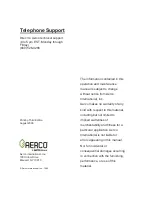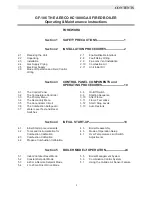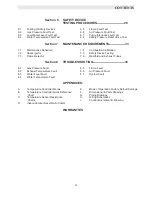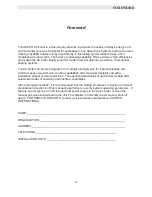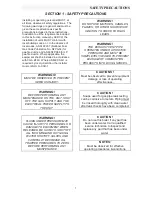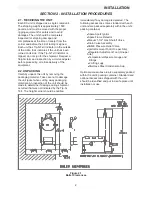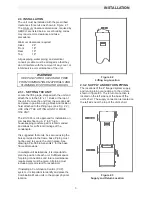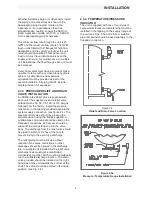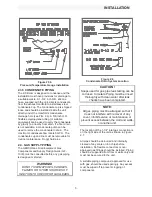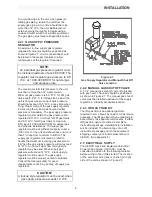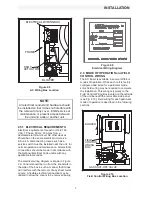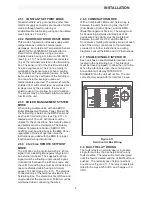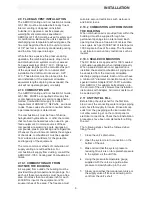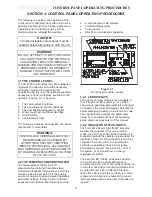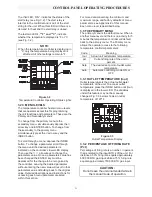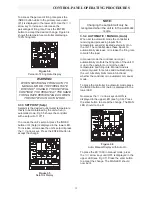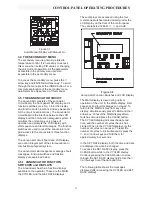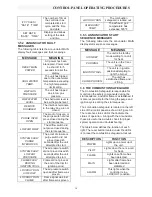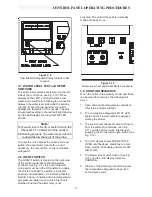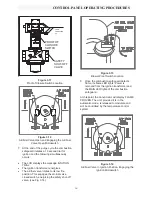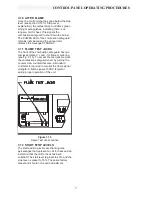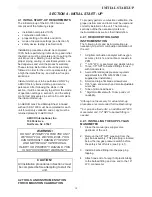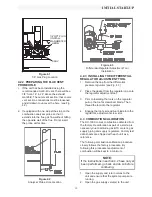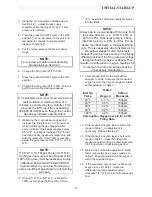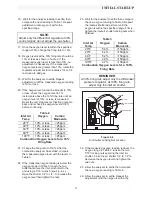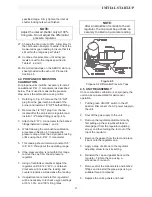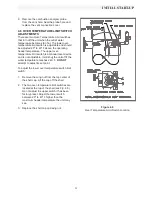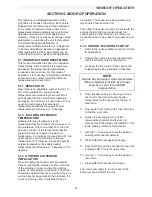
INSTALLATION
9
2.9 FLUE GAS VENT INSTALLATION
The AERCO Venting and Combustion Air Guide,
GF-1050, must be consulted before any flue or
inlet air venting is designed or installed.
Suitable, U/L approved, positive pressure,
watertight vent materials as specified in
AERCO’s GF-1050, must be used for safety and
UL certification. Because the unit is capable of
discharging low temperature exhaust gases, the
flue must be pitched back to the unit a minimum
of 1/4" per foot to avoid any condensate pooling
and to allow for proper drainage.
While the has a positive flue pressure during
operation, the combined pressure drop of vent
and combustion air systems must not exceed
140 equivalent feet of 0.81” W.C.. Fittings as
well as pipe lengths must be calculated as part
of the equivalent length. For a natural draft
installation the draft must not exceed - 0.25”
W.C..These factors must be planned into the
vent installation. If the maximum allowable
equivalent lengths of piping are exceeded, the
unit will not operate properly or reliably.
2.10 COMBUSTION AIR
The AERCO Venting and Combustion Air Guide,
GF-1050, MUST be consulted
before
any flue
or combustion supply air venting is designed or
started. Combustion air supply is a direct
requirement of ANSI 223.1, NFPA-54, and local
codes. These codes should be consulted before
a permanent design is determined.
The combustion air must be free of chlorine,
halogenated hydrocarbons, or other chemicals
that can become hazardous when used in gas-
fired equipment. Common sources of these
compounds are swimming pools, degreasing
compounds, plastic processing and refrigerants.
Whenever the environment contains these types
of chemicals, combustion air must be supplied
from a clean area outdoors for the protection
and longevity of the equipment.
The more common methods of combustion air
supply venting are outlined below. For
combustion air supply from ducting, consult the
AERCO GF-1050, Venting and Combustion Air
Guide.
2.10.1 COMBUSTION AIR FROM
OUTSIDE THE BUILDING
Air supplied from outside the building must be
provided through two permanent openings. For
each unit these two openings must have a free
area of not less than one square inch for each
4000 BTUs input of the equipment or 250
square inches of free area. The free area must
take into account restrictions such as louvers
and bird screens.
2.10.2 COMBUSTION AIR FROM INSIDE
THE BUILDING
When combustion air is provided from within the
building, it must be supplied through two
permanent openings in an interior wall. Each
opening must have a free area of not less than
one square inch per 1000 BTUH of total input or
1000 square inches of free area. The free area
must take into account any restrictions such as
louvers.
2.10.3 SEALED COMBUSTION
The KC Boiler is UL approved for 100% sealed
combustion application when installed properly.
When a sealed combustion air application is
installed, the sealed combustion air piping must
be deducted from the maximum allowable
discharge piping amounts. Each unit must have
a minimum 6" diameter connection made to the
special Inlet Air Adapter # GP-18917 available
from AERCO. This adapter bolts directly on to
the air inlet of the unit’s blower. See installation
instructions with adapter. All inlet air ducts must
be sealed air tight.
2.11 UNIT INITIAL FILL
Before filling the unit’s shell for the first time,
blow out all the connecting water and gas piping
and check thoroughly for leaks. Rinse all soap
suds from the gas piping with clean water. Do
not allow water to get on the control panel or
electrical connections. Check that all installation
procedures have been completed before filling
the unit.
The following steps should be followed when
filling the unit:
1. Close the unit’s drain valve.
2. Open the system return connection on
the
bottom of the unit.
3. Make certain that the system pressure
reducing fill valve is on to replenish pressure
in the system as the unit fills.
4. Using the pressure/temperature gauge,
supplied with the unit, as a guide, allow
pressure to slowly build up in the unit.
5. Slowly open either the manual vent valve or
the supply valve off its seat, allowing air to
vent from the unit’s shell.
Summary of Contents for AERCO KC Series
Page 51: ...TROUBLESHOOTING 41...
Page 65: ...APPENDIX C ix...
Page 72: ...APPENDIX F xvi...
Page 74: ...APPENDIX F xviii...
Page 76: ...APPENDIX G xx...
Page 77: ...APPENDIX G xxi...
Page 78: ...APPENDIX H xxii...
Page 79: ...APPENDIX H xxiii...
Page 80: ...APPENDIX H xxiv...


